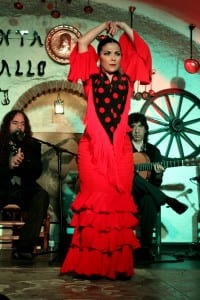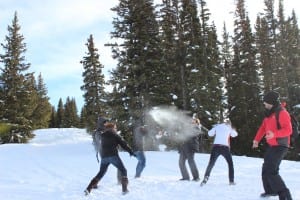Conference presentations. A confusing cocktail of mixed emotions for any Ph.D student. The excitement of travelling to a different country to hear talks first hand from the ‘superstars’ of your field…coupled with the fear of presenting something you’ve poured your heart and soul into in front of the same peers.
In January I travelled to Aspen, Colorado with my entire lab group for the ‘Microscale Interactions in Aquatic Environments’. A 5 day conference with 100 or so researchers discussing the interdisciplinary field of marine biology and microscale physics. Beautiful scenery, an amazing hotel and fantastic company. I had attended the previous event held in the French Alps back in 2013 so it was great to see old friends again and have a good catch up. I think my favourite thing about these small meetings is that you are able to talk to other researchers multiple times and after a few days you begin to get a real feel of community for your scientific niche.
Practice, Practice, Practice
The ‘dark side’ of this trip was that I was giving my first conference presentation and it was scheduled for 9am on the very last day of the meeting; and although there was plenty of allotted time to ‘relax’, most of mine was spent refining my presentation. Luckily, other Ph.D. students were in the same situation as me and were equally nervous. We banded together and found time to present our talks to each other, answer potential questions that may be asked by our peers, and test our talks out on the big stage.
I arrived early on the day of my talk, stood on the stage and repeated my talk as many times as I could before people began to trickle into the auditorium around 8. Then the hour was upon me, the first few words out of my mouth were somewhat croaky and I could hear my heart beating in my ears, but then everything settled down, I was calm, confident…and perhaps most importantly, I was having fun! After answering a round of questions, I sat down and dealt with a different cocktail of emotions – exhaustion and happiness. I now had about 10 hours to enjoy the sights and sounds of Aspen fully. A trip on a ski lift to the top of a mountain to enjoy breathtaking views and a well-earned dram of whiskey. Lovely.
The Big One: ASLO 2015
A little over a month after returning from Aspen, I was packing my bags again for another conference; however this one was going to be very different. ASLO (Association for the Sciences of Limnology and Oceanography) 2015 Aquatic Sciences Meeting in the ancient city of Granada, Spain. This conference boasted 2500 participants from 64 countries, a mammoth-sized meeting in comparison to Aspen with up to 20 concurrent sessions occurring at the same time. You have to have a different mind-set for these conferences. You simply cannot be in 20 places at once and these sessions are held in rooms spread across multiple floors and multiple corridors. In short, imagine rushing through an airport to make to your connecting flight…multiple times a day… and you’ll get a pretty good idea about what a day at an international conference is like. Naturally with a conference of this scale, it’s difficult to meet and talk to people. You often see a friend or peer once and then not see them again for the rest of the conference.
I was scheduled to give a talk midway through the meeting in the ‘Life at Small Scale: Microscale insights into Aquatic Systems’ session. The talk was to be mostly the same talk as I gave in Aspen (I couldn’t get much data collection and analysis done in a month 🙂 ), however the experience for preparing for the talk was very different. Presentations had to be uploaded to the conference server 24hrs beforehand, videos could not be checked to make sure they work (a big deal for anyone who uses media files in their presentations), and the luxury of practising on the big screen was relegated to a small laptop in a hotel room.
Again, I arrived early on the day of the talk and practised in a secluded hallway. I was fitted with a microphone headset and had to race between the two small screens (rather than the single ‘cinema-sized’ one at Aspen). Behind me, a panel of three of my peers; and in front a sea of unfamiliar faces, some of which either entered or exited the talk midway through (Do not take offence if this happens to you, it is common at these big conferences!). The talk itself went well – maybe not as refined or smooth as Aspen, but still more than good enough!
One of the top experiences of the conference was the academic ‘speed-dating’ session. A cluster of 15 or so round tables full of young and old academics alike, where participants had seven minutes to briefly explain who they were and what their research interests were. You would think that repeating your ‘spiel’ (the parrot fashion script that every academic has up their sleeve when asked ‘what do you do’) would get old pretty quick, but it was a fantastic way to practice and refine this vital academic social skill. More importantly, I made several contacts, both for myself and others in the lab; and received a real confidence boost when people said my work would really help explain some of the unknowns in their own research.

Authentic Flamenco – Perfect way to relax after giving a talk
So…which is better.
Each conference had their merits and I gained a huge amount of knowledge about my science and myself from both experiences. However for me, the smaller and more intimate conference at Aspen was much more enriching and enjoyable. I could discuss at length and across multiple days the details of mine and others research; and build relationships on a personal level my peers. So for me, Aspen is the clear winner…and I would attend another small conference in a heartbeat.

